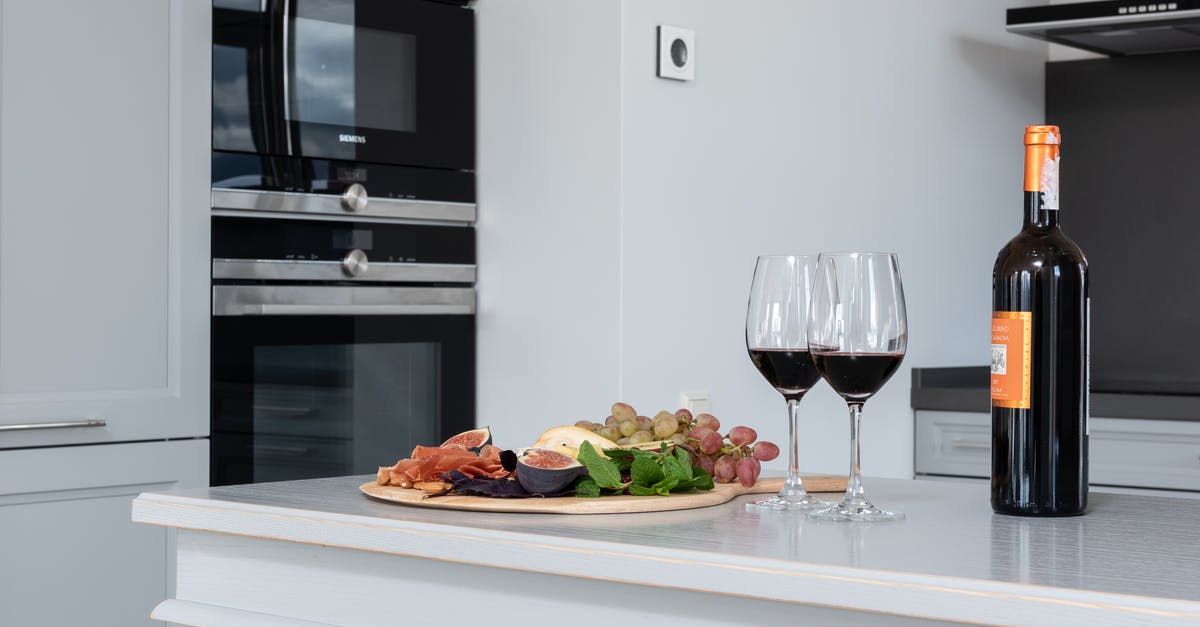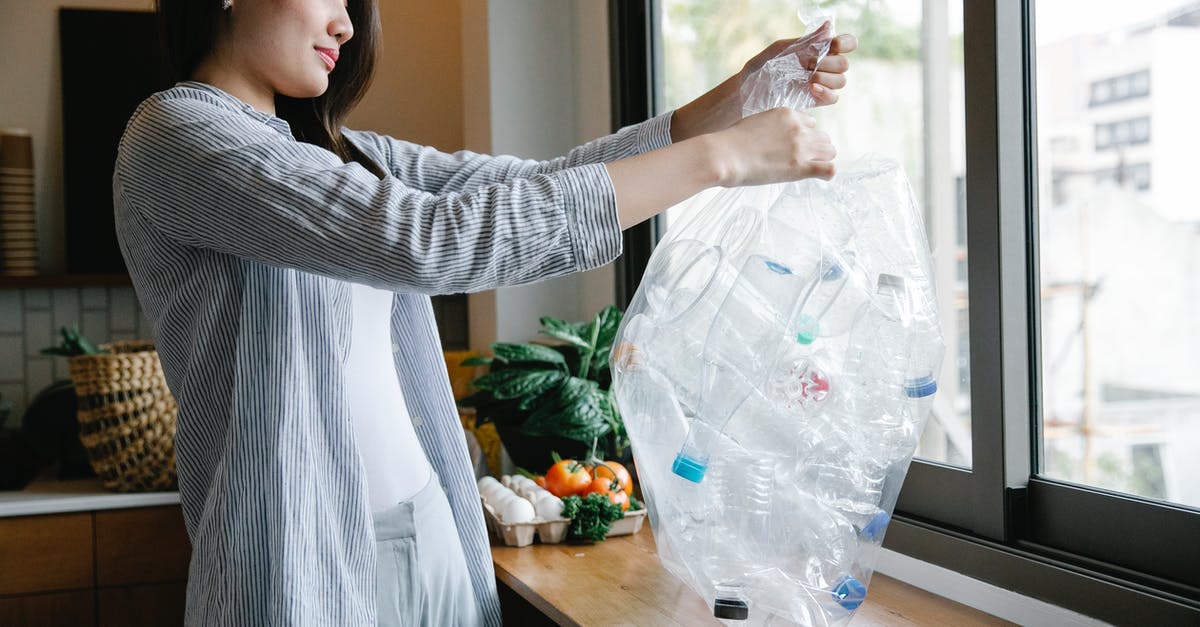Is there a problem with defrosting meat on the counter?

I generally defrost meat on the kitchen counter. A friend of mine suggested that this was dangerous and suggested that I defrost meat in the refrigerator. I am no biologist but it seems to me that as long as the meat doesn't get warm defrosting it on the counter should be safe.
Generally, I remove the frozen items from the freezer and place them on a plate on the counter in the packaging they were frozen in. When they are mostly / completely thawed I place the meat in the refrigerator.
Am I wrong and should I be defrosting in the refrigerator?
Best Answer
A lot of bacteria grows in the range of 40-100°F (4-38°C) (i.e. room temperature). It's definitely not recommended to defrost meat at room temperature. In fact, you are not supposed to leave meat at room temperature for more than an hour.
However, defrosting in the refrigerator can take a long time and require you to plan at least one day ahead of time. I'm not so good at this, which leads to a safe and fast solution: Defrost meat in a waterproof ziploc bag in cold water. Change the water every 30 minutes until defrosted. The water is a better conductor of heat than air, so the defrosting is quite fast and the water is cold so there's minimal safety risk.
From the USDA:
Uh, oh! You're home and forgot to defrost something for dinner. You grab a package of meat or chicken and use hot water to thaw it fast. But is this safe? What if you remembered to take food out of the freezer, but forgot and left the package on the counter all day while you were at work?
Neither of these situations are safe, and these methods of thawing lead to foodborne illness. Food must be kept at a safe temperature during "the big thaw." Foods are safe indefinitely while frozen. However, as soon as food begins to defrost and become warmer than 40 °F (4 °C), any bacteria that may have been present before freezing can begin to multiply.
Foods should never be thawed or even stored on the counter, or defrosted in hot water. Food left above 40 °F (unrefrigerated) is not at a safe temperature.
Even though the center of the package may still be frozen as it thaws on the counter, the outer layer of the food is in the "Danger Zone," between 40 and 140 °F (4 °C and 60 °C) – at temperatures where bacteria multiply rapidly.
When defrosting frozen foods, it's best to plan ahead and thaw food in the refrigerator where food will remain at a safe, constant temperature – 40 °F (4 °C) or below.
There are three safe ways to defrost food: in the refrigerator, in cold water, and in the microwave.
Refrigerator Thawing Planning ahead is the key to this method because of the lengthy time involved. A large frozen item like a turkey requires at least a day (24 hours) for every 5 pounds of weight. Even small amounts of frozen food -- such as a pound of ground meat or boneless chicken breasts -- require a full day to thaw. When thawing foods in the refrigerator, there are several variables to take into account. Some areas of an appliance may keep the food colder than other areas. Food placed in the coldest part will require longer defrosting time. Food takes longer to thaw in a refrigerator set at 35 °F (2 °C) than one set at 40 °F (4 °C).
After thawing in the refrigerator, ground meat and poultry should remain useable for an additional day or two before cooking; red meat, 3 to 5 days. Foods defrosted in the refrigerator can be refrozen without cooking, although there may be some loss of quality.
Cold Water Thawing
This method is faster than refrigerator thawing but requires more attention. The food must be in a leak-proof package or plastic bag. If the bag leaks, bacteria from the air or surrounding environment could be introduced into the food. Also, meat tissue can also absorb water like a sponge, resulting in a watery product.
The bag should be submerged in cold tap water, changing the water every 30 minutes so it continues to thaw. Small packages of meat or poultry – about a pound – may defrost in an hour or less. A 3- to 4-pound package may take 2 to 3 hours. For whole turkeys, estimate about 30 minutes per pound. If thawed completely, the food must be cooked immediately.
Foods thawed by the cold water method should be cooked before refreezing.
Pictures about "Is there a problem with defrosting meat on the counter?"



Quick Answer about "Is there a problem with defrosting meat on the counter?"
However, as soon as they begin to thaw and become warmer than 40 °F, bacteria that may have been present before freezing can begin to multiply. Perishable foods should never be thawed on the counter, or in hot water and must not be left at room temperature for more than two hours.Is there a problem with defrosting meat on the counter?
More answers regarding is there a problem with defrosting meat on the counter?
Answer 2
Technically or practically?
Technically, it's not the best idea. The purpose of thawing is to bring the meat above 32 degrees but not above 40. (Bringing it to room temperature is a separate process, done only immediately prior to cooking). In a refrigerator, the temperature is probably between 35-45 degrees, so there's no problem. On the counter, ambient temp is between 65-85, so it's dicey-town bacterially. 40-140 degrees is the "hot zone": good for bacteria, bad for you.
The particular danger of thawing on a countertop is that the exterior of the packaging, especially juices on the surface of the meat or on the inside of the container, may reach room temperature and remain there for hours. So, ideally, using the refrigerator overnight is best.
...On the other hand, lots of people do it. Defrosting outside of the fridge is much faster, and you're probably fine as long as you don't let the meat sit out once it's center is thawed. It would also be wise to use the meat that day, so that any bacteria which may have started working while it sat out doesn't have too long to mingle (especially if your fridge isn't a very cold one).
The key is that you're going to cook this meat, so its exterior will be flash-fried, steamed, or seared at well above bacteria-killing temperature.
Your best bet is to use good meats, wash your hands, and be mindful of contaminating cutlery and cutting surfaces with raw meat juice. Otherwise... it hasn't killed you yet.
Answer 3
It it's not for immediate cooking, defrost in the fridge. The rule of thumb is for a piece of meat to spend no more than 4 hours (cumulative) in the danger zone (above 40 degrees F). A thin piece of steak won't take that long to defrost, so it's relatively safe to defrost on the counter and then cook immediately. A big roast or chicken on the other hand, has a much higher mass to surface area ratio and will take longer to thaw, leaving the exterior in the danger zone for longer than is safe.
If you want faster defrosting, put the whole sealed package of meat in cold water in the fridge. Water is a much better conductor of heat than air, so it will speed up the process while remaining under 40 degrees. I think you could also combine this with brining by taking the meat out of its package and adding sufficient salt to the water (about a tablespoon per cup).
Personally, I like to put the meat in a marinade (with salt and acid) in a gallon ziplock bag, and stick it in the fridge for a few hours.
Answer 4
No no no no. Bag idea. Don't defrost on the counter. Like a lot of people said already, 40-100 degrees exponentially causes bacteria growth. Yes proper cooking can kill a lot of bacteria, but nothing is guaranteed. Besides, certain types of toxins (eg spores) are produced by bacteria and aren't destroyed by heat, only way to prevent is to not allow the growth of the pathogen.
Either A) defrost the day or two before in the fridge ( change the liquid). The safest method. B) defrost in a ziplock bag in the sink. Restaurants do this ALL the time. Meat defrosts fairly fast. Use cold water to defrost, not hot ( same bacteria problem, plus paially cooks meat, yuck). Just leave the sink barely running with cool / lukewarm water. it will be defrosted in 30-60 min.
C) microwave. Which is fairly safe, but can destroy a good cut of meat. Not preferred
A lot of food poisonings are caused by this. Ever get an upset stomach?
Answer 5
The problem with defrosting meat on the counter is the temperature the exterior of the meat reaches, and the duration it stays there in order for the entire thing to be completely defrosted.
For any meat, unless you're letting it reach room temperature from a refrigerated temperature (35-40?) to immediately cook it you should keep it at a refrigerated temperature to inhibit the growth of beasties.
The bottom line is that above 40? things will grow. With a steak defrosting in the refrigerator you are assured that no part of the steak gets above 40?. If defrosting on your counter the surface temperature of your meat likely gets at least as high as 60? before the entire thing is defrosted.
The only time my meat is exposed to temperatures above 40? is during transit from the store, and if I'm letting it get to room temperature for immediate cooking (30-60 mins).
I will occasionally "rapidly" defrost things under cold running water in the sink. I recommend against still water because it will reach room temperature and the previous warnings will apply. The running water speeds up the heat transfer. Keep in mind though that this uses an insane amount of water and is still pretty slow. I usually only bother with tuna steaks. I can get a 1" thick tuna steak defrosted in about 25 minutes this way. Make sure that the meat is in a water-tight zip-loc bag.
Please see the USDA's safe defrosting methods for additional details. The only methods listed are refrigerator, microwave, and cold water method.
Answer 6
I defrost chicken breast meat with a sous vide circulator set at 160, putting the breast in once the water is at that temp. It takes a very short time to regain the set temp once the meat is introduced. After meat and water has reached 160 and been there for a half hour I start my cook time of two hours. Excellent results.
Answer 7
thaw meat in cold water while in a ziplock bag, check on the water every 30 minutes make sure that it stays cold
Answer 8
The Food Standards Agency say that it is only safe to defrost items at room temperature, when they're not going to be cooked before eating (such as cheesecake). Meat would not fall into this category, so would be safer to defrost in a fridge (typically for 24 hours, but depends on size/etc) or using a defrost setting on a Microwave.
Answer 9
I am sorry but I have been defrosting boneless chicken breast for at least 4 years ,on the counter and cook it to 160 degrees and have never had a problem (maybe I've been lucky) but my chicken is so tender and have never been sick, ???
Sources: Stack Exchange - This article follows the attribution requirements of Stack Exchange and is licensed under CC BY-SA 3.0.
Images: Liza Summer, Max Vakhtbovych, Katerina Holmes, Kampus Production
